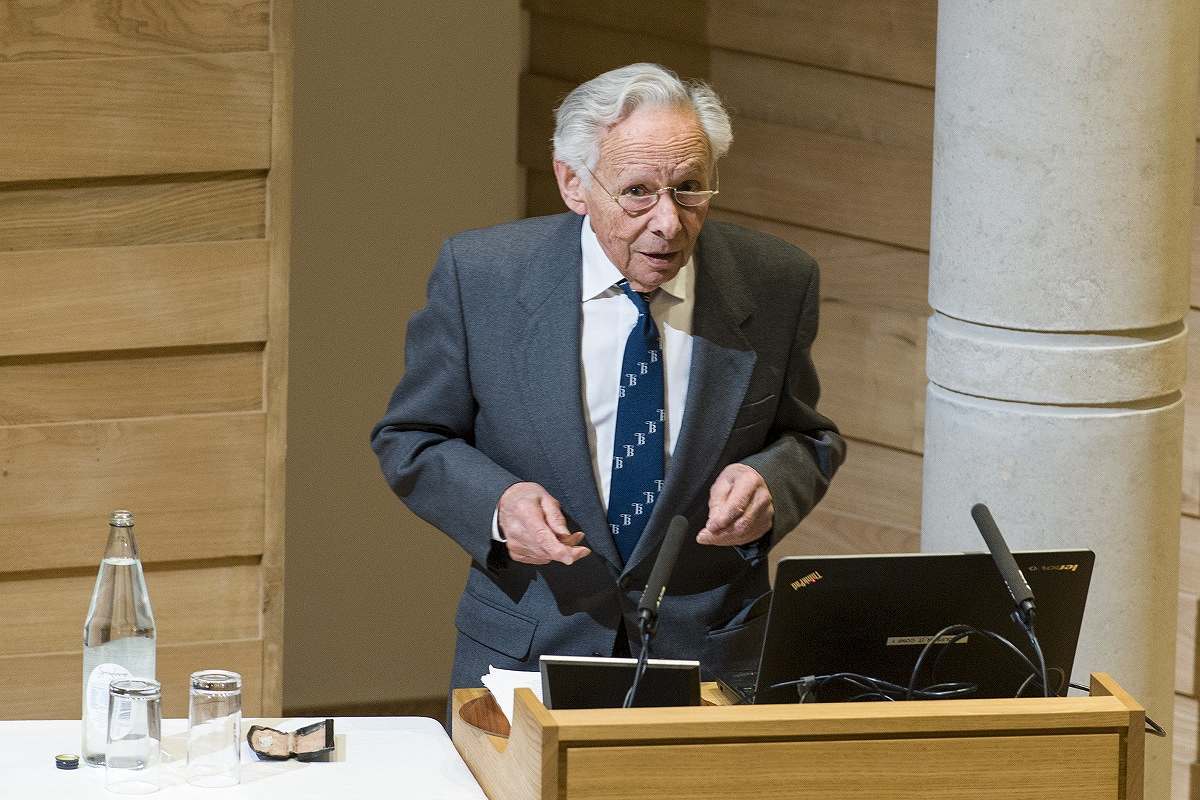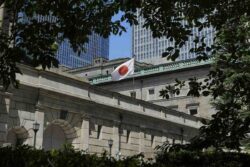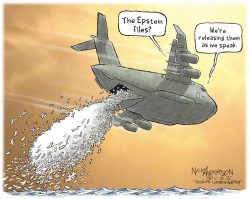
2014 photo of Dr. Epstein, who was a fellow of Wolfson College, Oxford.
15:32 JST, February 16, 2024
Anthony Epstein, a British pathologist whose chance attendance at a lecture on childhood tumors in Africa began years of scientific sleuthing that led to the discovery of the ultra-common Epstein-Barr virus and opened expansive research into its viral links to cancers and other chronic ailments, died Feb. 6 at his home in London. He was 102.
His partner, Dr. Katherine Ward, confirmed the death but gave no specific cause.
Dr. Epstein’s work in the 1960s to isolate the virus – a type of herpes – set the foundation for sweeping studies into viral and biological triggers for cancers such as Hodgkin’s lymphoma and potential links to other diseases including multiple sclerosis, lupus and, most recently, so-called long covid.
The research later expanded to detect other cancer-causing viruses such the human papillomavirus, or HPV. Unlike HPV, however, no vaccine has been developed for Epstein-Barr, named for Dr. Epstein and colleague Yvonne Barr, which is believed present in more than 90 percent of the world’s population.
“Everyone is putting a brick in the wall,” Dr. Epstein said about the multiple fronts of research on the Epstein-Barr virus. “It is the accumulation of bricks which makes the building.”
For most people, Epstein-Barr is a silent hitchhiker. It is spread through saliva and other bodily fluids and often acquired during childhood. The virus sits in throat and blood cells, maybe flaring up as mononucleosis or a bout of lethargy, or with no symptoms at all. Yet in some cases, the virus takes off by rapid replication in host cells.
“It’s very stealthy,” Jeffrey Cohen, the chief of the infectious-diseases laboratory at the National Institute of Allergy and Infectious Diseases, told the New York Times in 2022.
This is the point where the science gets hazier. There’s consensus that a surge in the Epstein-Barr virus has an association with some cancers of the stomach, nasal system and blood. Less clear is how much the virus acts as a possible springboard for other cancers, serious inflammations such as viral meningitis and an array of autoimmune diseases including rheumatoid arthritis.
A complication is that Epstein-Barr is so prevalent that researchers have trouble proving direct cause and effect. But the virus, which can be grown and sustained in lab settings, has become invaluable in cancer studies by watching its effect on healthy cells and tissue.
“We can monitor how [the virus] acts in all kinds of biological environments and with different cells,” Sumita Bhaduri-McIntosh, chief of pediatric infectious diseases at the University of Florida College of Medicine, said in an interview. “It’s an invaluable model for research into how things go wrong.”
For Dr. Epstein, the unfulfilled search for a vaccine remained a lifelong frustration. In the latest vaccine efforts, the National Institute of Allergy and Infectious Diseases in 2022 began the first clinical trials in more than a decade. “The chain is not understood but the evidence is,” said Dr. Epstein on how the virus appears to contribute to higher rates of cancers and diseases. “But without [the virus] you don’t have a continuous chain … [and] you can remove that by vaccinating to prevent infection.”
Decades earlier, his work with the virus began with pure scientific serendipity. In 1961, Dr. Epstein heard about a lecture at Middlesex Hospital Medical School in London by a Northern Ireland-born surgeon, Denis Burkitt, who was based in Uganda and researching a mysterious tumor found in some local children, often in their jaw. Dr. Epstein at the time had been studying links between viruses and diseases in birds and other animals.
Dr. Epstein decided to see what Burkitt had to say. He sat in the back, ready to slip out if he was not interested. Instead, Dr. Epstein was riveted by Burkitt’s descriptions of the tumor (later named Burkitt’s lymphoma) and how its occurrence was closely linked to climate and other factors. Burkitt’s findings were similar to his studies in viral links with animals, Dr. Epstein thought. “I could hardly sit still. … It had to be that it was a virus-induced tumor in humans,” he recalled.
Dr. Epstein asked Burkitt to send him tumor tissue from Uganda. For years, the analyses made no headway. Then, in December 1963, a sample put on the BOAC flight to London was diverted to Manchester because of fog. By the time the tumor tissue reached Dr. Epstein days later, the shipment seemed useless. It was surrounded by a cloudy fluid thought to be bacteria. The mix turned out to be a soup of free-floating lymphoma cells that were shed by the tumor. Rather than tossing it away and asking Burkitt for more, Dr. Epstein decided to try to grow the cells in a culture.
“So I thought, ‘Why not give it a go?’” he recalled. Under an electron microscope, the cells finally gave up their secret: viral particles were evident. A 1964 paper in the British medical journal Lancet, written by Dr. Epstein, Barr and research assistant Bert Achong, described the breakthrough moment with the first proof of a previously unknown virus inside a human tumor.
In a 2014 interview with the BBC, Dr. Epstein recalled that he needed to calm down after recognizing that he stumbled across a new virus and its apparent link to cancer in humans. He took a long walk in the snow before returning to double-check the findings.
“I had the feeling,” he said, “this was something special.”
Michael Anthony Epstein was born in London on May 18, 1921. He studied at Trinity College at the University of Oxford and Middlesex Hospital Medical School.
After serving in the Royal Army Medical Corps following World War II, he returned to Middlesex Hospital as an assistant pathologist. His early medical research probed the Rous sarcoma retrovirus, a cancer-causing virus that was first observed in birds.
Dr. Epstein was a professor of pathology at the University of Bristol from 1968 to 1985 and then was a fellow at Wolfson College at the University of Oxford until his retirement in 2001. Dr. Epstein was knighted by Queen Elizabeth II in 1991.
Dr. Epstein’s marriage to Lisbeth Knight ended in divorce. In addition to his partner, Ward, survivors include three children from his marriage, Simon Epstein, Michael Epstein and Susan Holmes.
In 1991, at Oxford Brookes University in Oxford, England, Dr. Epstein and Burkitt discussed the events leading to the Epstein-Barr discovery.
“It was a series of accidents, really,” Dr. Epstein said, smiling. “Lucky quirks.”
“But you have to have two things,” said Burkitt. “You have to have the accident, as it were, and the mind that can interpret them and look behind them and see their meaning.”
“Well, of course, that’s what Louis Pasteur said, wasn’t it?” Dr. Epstein replied. “‘Chance favors the prepared mind.’”
"News Services" POPULAR ARTICLE
-

American Playwright Jeremy O. Harris Arrested in Japan on Alleged Drug Smuggling
-

Japan’s Nikkei Stock Average as JGB Yields, Yen Rise on Rate-Hike Bets
-

Japan’s Nikkei Stock Average Licks Wounds after Selloff Sparked by BOJ Hike Bets (UPDATE 1)
-

Japanese Bond Yields Zoom, Stocks Slide as Rate Hike Looms
-

Japan’s Nikkei Stock Average Buoyed by Stable Yen; SoftBank’s Slide Caps Gains (UPDATE 1)
JN ACCESS RANKING
-

Keidanren Chairman Yoshinobu Tsutsui Visits Kashiwazaki-Kariwa Nuclear Power Plant; Inspects New Emergency Safety System
-

Imports of Rare Earths from China Facing Delays, May Be Caused by Deterioration of Japan-China Relations
-

University of Tokyo Professor Discusses Japanese Economic Security in Interview Ahead of Forum
-

Japan Pulls out of Vietnam Nuclear Project, Complicating Hanoi’s Power Plans
-

Govt Aims to Expand NISA Program Lineup, Abolish Age Restriction

























